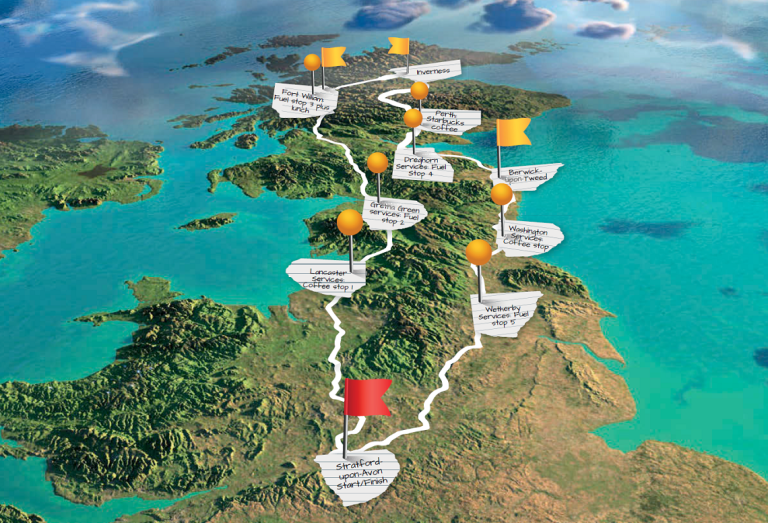Fresh back from riding 1,000 miles in 24 hours, Bryn Davies shares his seven top tips for completing an iron butt saddle sore 1000
Because it’s there.’ These three words are probably the most famous in mountaineering history. They were spoken by George Mallory in 1923 when a New York Times journalist asked him why he was going to climb Everest. Since then, they’ve perfectly summed up the reason for doing just about anything epic in the outdoors world.
In a similar, though less awe-inspiring setting (the M6 on a Monday morning), it was the same three worded answer that I was giving myself when the sensible side of my brain asked ‘why the hell are we doing an Iron Butt Saddle Sore 1000 in the middle of winter?’ I’d been on the road for four hours and the temperature on the BMW R 1250 RT’s dash was reading -4C.
I clicked my heated gloves up a setting and began to ponder the thought. Why would anyone want to do a challenge like this? The Iron Butt Saddle Sore 1000 is probably the most well-known challenge in long-distance motorcycling.
The premise is very simple: ride 1,000 miles within 24 hours. And I can guarantee, most riders you meet will say ‘Oh, I almost did an Iron Butt without trying when I rode back from Europe this one time…’
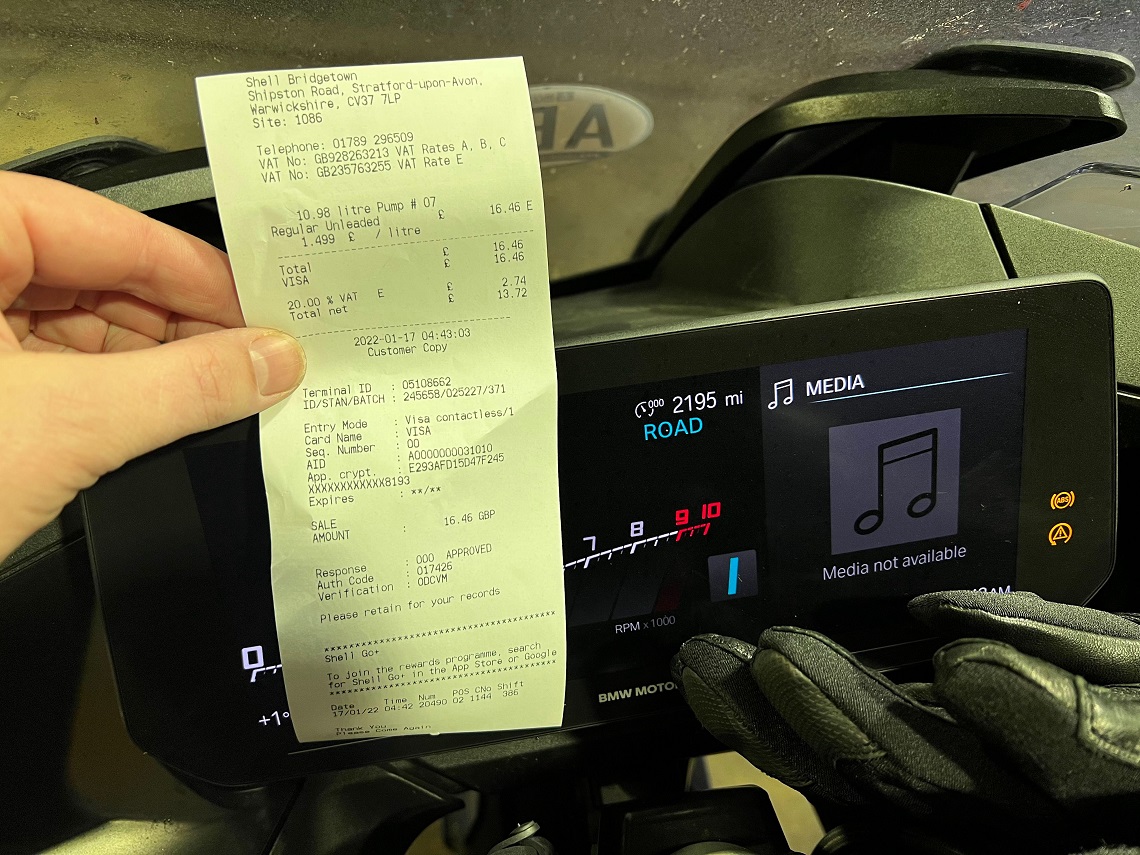
It’s not a particularly pleasurable endeavour, there’s no time to explore the places you’re riding through, your arse will get sore, and if we’re really trying to play devil’s advocate, we could argue that it’s a complete waste of fuel. But, as I discovered, it’s a rewarding and memorable experience unlike any other rides I’ve undertaken.
My carefully-crafted route (for carefully crafted, read ‘thrown together the night before’) took me from Stratford-upon-Avon to Fort William, onto Inverness, then to Berwick-upon-Tweed, before finishing back in Stratford. According to Google Maps, that was exactly 1,000 miles, and I completed it by the skin of my teeth.
Anyone can ride 1,000 miles in 24 hours, but if you want to have your ride verified by the Iron Butt Association and receive a certificate celebrating your achievement, you’ll need to document your ride in a specific way.
–
This involves taking photos of your receipts at all fuel stops with your odometer as evidence and, once your submission has been accepted, will cost you £25 for the certificate.
–
You can find out more information on the Iron Butt Association website: www.ironbutt.co.uk.
I began the journey at 4.44 am and rolled back into Stratford 23 hours 40 minutes later at 4.24 am. In that time, I saw plenty of motorway miles, rode the magnificent A82 through Glen Coe and spent the last few hours in freezing fog so thick I could barely make out the lane markings in front of me.
Doing this sort of challenge isn’t for everyone, but if you’re successful in your attempt I can guarantee you’ll feel pretty damn good about yourself.
The satisfaction of completing something defined is worth the effort, and if you submit your route evidence to the Iron Butt Association, then you’ll get an official certificate that you can proudly display wherever your friends might see it (I’ve yet to submit my ride, but am planning on doing it soon).
On the face of it, riding 1,000 miles in 24 hours is a straightforward affair. What more do you need to know than ‘point your tyres down a motorway and have at it!? But the reality is that, with a bit of know-how and some planning, you can increase your chances of success. So, I want to share with you the seven things that I learnt on my ride that I think are most important for successfully completing an Iron Butt.
Planning your route
It makes sense to plan your route starting from the closest petrol station to your house. The reason being, you’ll start with a full tank and you can use that receipt to verify your start time. From there on, the route you decide to take will largely be down to personal preference, but there’s a very specific reason why I decided to ride up the M6 to Scotland from Stratford-upon-Avon and then back down the M1.
Motorway riding is dull yet absolutely necessary if you want to complete a challenge like this. But, if you can break up the dull riding with some great roads and beautiful sights, the whole thing will feel less of a slog.
For me, I broke up two mammoth motorway sections with a stunning ride through the Scottish Highlands along some of my favourite roads. This gave my ride a bit of purpose (being able to leave home in the morning, ride through Glen Coe in the afternoon, and be back in the same 24 hours was pretty cool) and left me feeling energised for the long ride south.
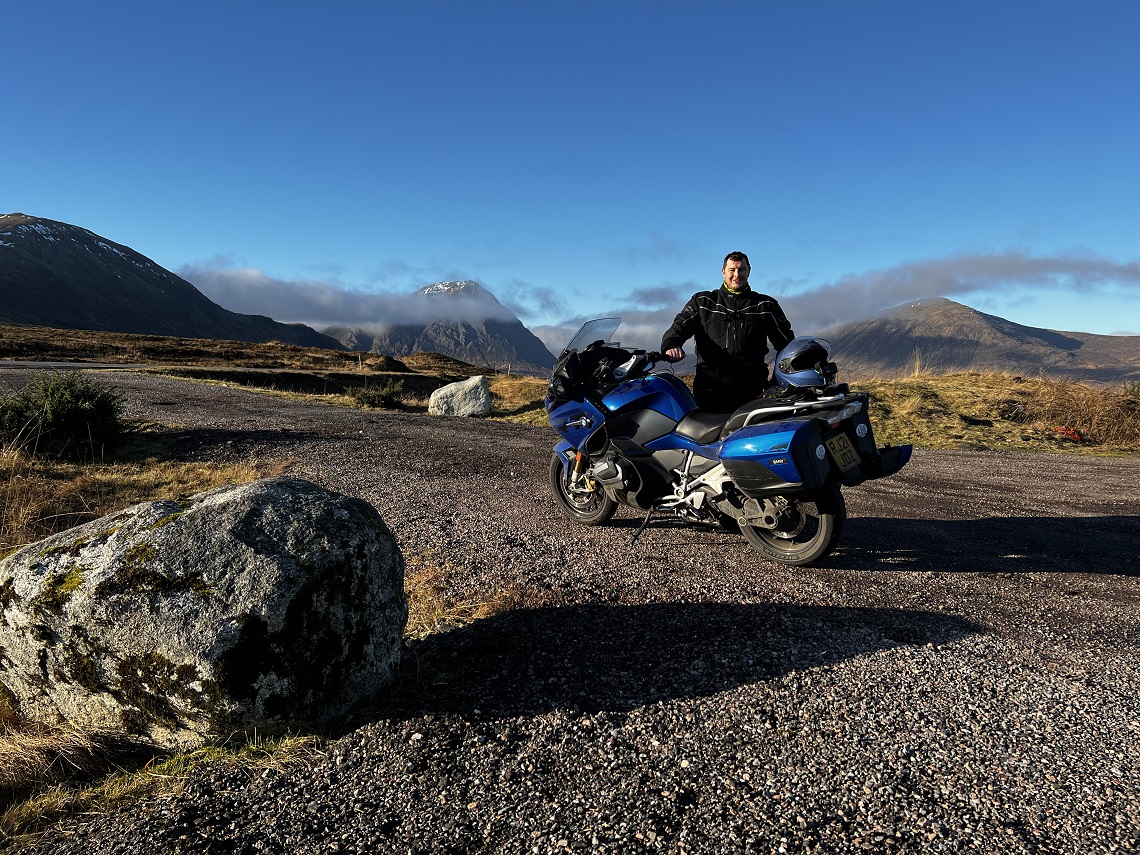
You’ll definitely want to be wary of your timings as well. Looking at my route, I knew there was likely to be traffic on the M6 around Manchester, Liverpool, and Preston. Then in Glasgow, and finally around Newcastle. For the ride to go as smoothly as possible, I’d need to avoid these places during peak hours. So, I decided to make it past Manchester before rush hour and hit Glasgow after the morning rush had taken place.
By the time I’d reach Newcastle, there’d be little traffic as it would be late at night. By doing this, I missed all the rush hour madness and had a relatively smooth ride. So, when you’re planning your route, keep timings at the fore of your mind.
I didn’t actually plan out any of my petrol stops for the simple reason that we’re not exactly short on forecourts in the UK. If you need fuel and you’re travelling along motorways and A-roads, chances are you’ll come across a petrol station soon enough. Planning these would have added a rigidity to my ride that it didn’t need.
Gearing up for success
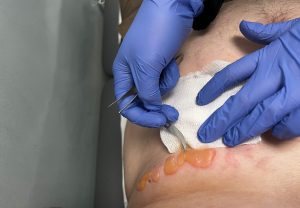
Whether you’re planning on doing your ride in the summer or winter, the most important thing to consider after your bike is the gear that you’ll be wearing. OK, it’s more of a factor in winter, but there’s every chance you’ll run into rain in the summer as well, and when the sun goes down it can get cold quickly.
With this in mind, you need to be confident that your gear will be able to handle what you’re going to throw at it, and you need to know that you’ll be comfortable wearing it. By that, I mean don’t buy new gear and christen it on a 1,000-mile challenge. Put your faith in gear you know and trust.
A heated jacket and gloves were essential in my eyes. Much of my route was done in minus temperatures, but I was toasty warm thanks to my heated gear. Do be aware of manufacturer safety warnings though. They’re there for a reason and I ended up burning my chest quite badly because I did everything the warning label on my heated jacket told me not to do (don’t wear for extended periods of time on high heat, and so on).
On this point, make sure you have all of your gear laid out and ready for you for when you wake up. You’d be surprised at how much time you lose trying to hunt down a neck tube at 4am.
Fuelling your bike and yourself
Of course, time is of the essence with a ride like this and you can’t really spend time dithering around service stations enjoying sit-down meals and relaxed tea breaks. The food you eat along the way will impact how you feel as the hours drag on. If you eat crap, you will feel like crap, so try to be mindful of that when you’re staring at a picture of a Bacon Double Cheeseburger XL meal.
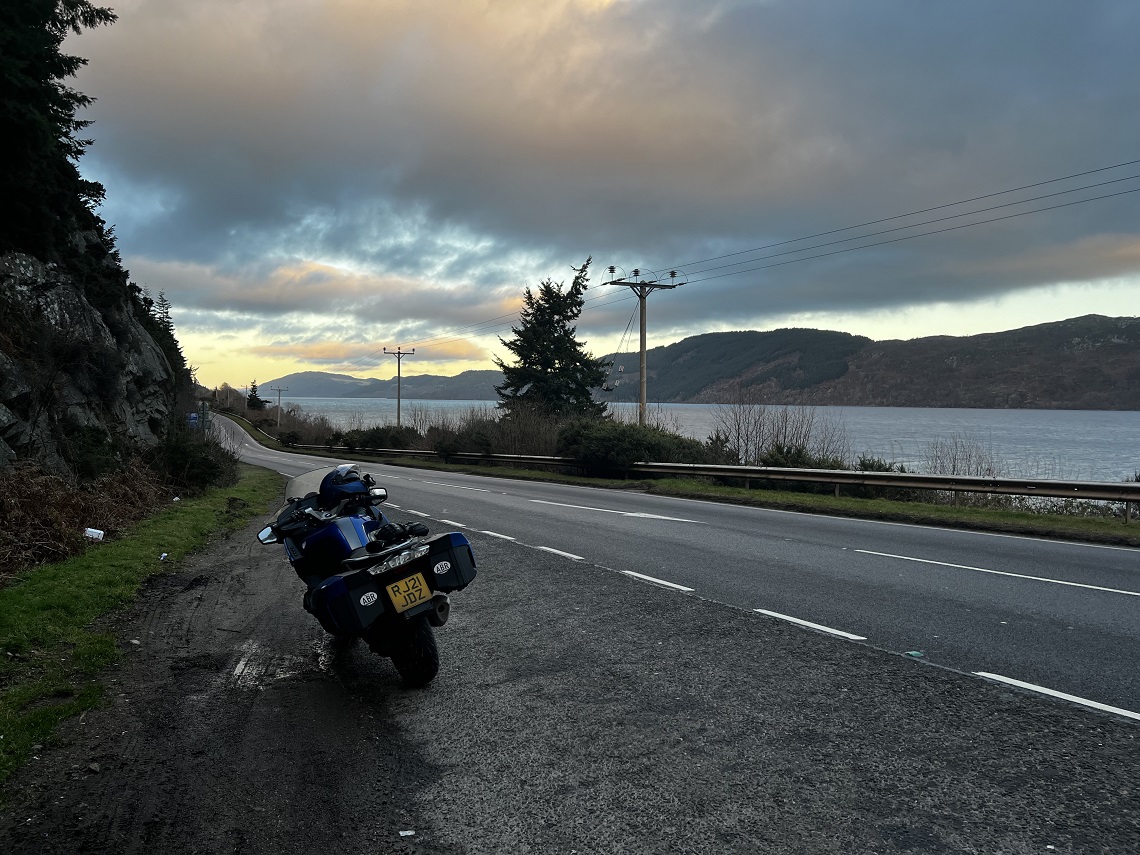
Surprisingly, the documentation on the Iron Butt website advises you not to drink caffeine on your ride, arguing that the lows aren’t worth the highs. I’ll say it now, without a few coffee stops I would still be in Scotland today. I relished my stops and they really helped to keep me going. I would argue that, as a regular and daily coffee drinker, cutting off my supply of caffeine would have a more detrimental effect than going through the highs and lows of using caffeine.
Stop regularly
This is a real game-changer to help keep yourself feeling alert and willing to carry on riding. Take regular and short breaks. As you progress on your ride your bike’s saddle will start to feel harder and less comfortable, your body will start to ache, and you’ll probably start to get bored.
When you take short, regular breaks (I’m talking five-10 minute stops every hour or so when you’re struggling) it’ll give you welcome respite from aches and pains. Take time to stretch and loosen up, walk up and down the layby, get the blood flowing. It’ll all help you feel more refreshed and ready to take on the next 100 miles.
Choose your date wisely
Most people would choose to do an Iron Butt in the summer, and for good reason. Doing a 24-hour ride when the days are long would be far easier and less miserable. Just having the sun as a companion for the majority of the route would be welcome, while the higher temperatures in the summer are an obvious benefit. Be aware, however, that the roads are going to be busier, especially if you’re riding on a public holiday or when the schools are out.
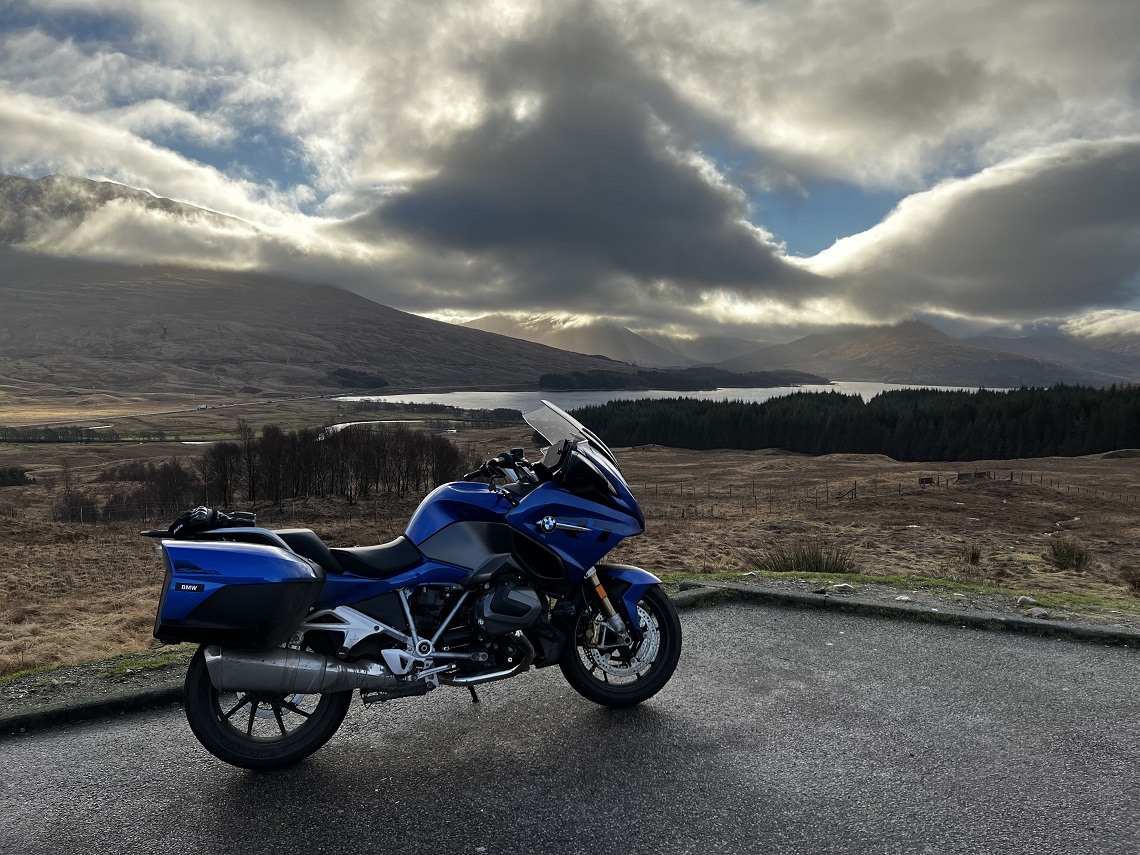
On my ride in January, I had just eight hours of sunlight and one of those was spent sat in McDonald’s in Fort William, but that’s just one of the challenges you’re going to have to contend with if you decide you want to do a winter Iron Butt. Also, consider that prolonged exposure to even moderately cold weather can be miserable and will sap your energy more, and there’s a lot of crud on the roads as well.
BMW R 1250 RT
I completed my Iron Butt Saddle Sore 1000 on a BMW R 1250 RT and I can honestly say that the bike made the whole thing so much easier than it would have otherwise been.
–
BMW’s tourer is perfectly set up for long-distance riding, particularly in bad weather. The heated grips are excellent, the heated seat a delight, the huge fairing does a brilliant job of keeping as much wind and rain off you as possible, and the tank range means you’re not stopping for fuel every hour.
–
The best part though, is the active cruise control. This uses a radar on the front of the bike to adjust your speed automatically based on what’s in front of you.
–
So, if a car slows down in your path, the bike will slow down, if the car speeds up, so will the bike. Turning this on for the motorway sections meant that I was able to effortlessly conquer the M6 and M1.
Stick to the speed limit
It’s oh-so-tempting to look at a 1,000 miles in 24 hours challenge and think that you can be sneaky and ride at illegal speeds to get it done faster, but there are a number of reasons why that’s a bad idea.
Obviously, it’s illegal and you shouldn’t be speeding. But it’s also far more dangerous and taxing on your body and mind. Just chill out in the slow lane and you’ll feel a lot better. It’s even easier if your bike has active cruise control, like the BMW R 1250 RT does.
Know your limits
Knowing your limits is incredibly important on a challenge like this. You might think that you’re a grown-up and staying up for 24 hours is a piece of cake, but when you’re constantly alert (as you have to be on a motorcycle) you can feel drained pretty quickly. With this in mind, it’s totally OK to fail. If you’re feeling too tired, pull in at the next hotel or services you can and get some rest.
I’ve done a lot of late-night long-distance rides so I’m pretty attuned to staying alert in the early hours, but I’ve also had occasions where I’ve been so tired that I’ve woken up riding on the wrong side of the road. Luckily, I managed to regain my senses in time to avoid disaster, but it’s important to know that these things can happen avoiding an accident is far more important than finishing a challenge.

